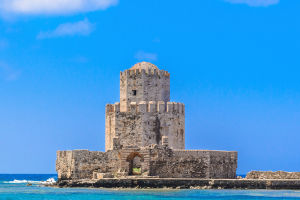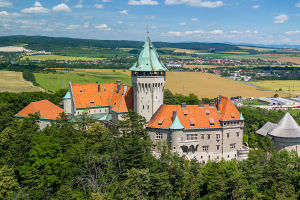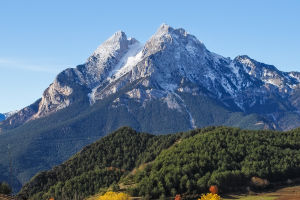The Drina River, celebrated as one of the most picturesque waterways in the Western Balkans, originates where the Tara and Piva rivers converge on the border of Montenegro and Bosnia and Herzegovina.
Beyond its significance for tourism and recreation, the river – along with its tributaries – serves as a vital habitat and spawning ground for endangered fish species.
Additionally, the river holds immense potential for hydropower generation, presenting a trade-off with its other roles. These diverse functions must be balanced alongside challenges posed by climate change and environmental degradation.
Similarly, the roads tracing the river’s path reflect its multifunctional nature. Road infrastructure along the non-navigable river is critical, enabling the flow of goods and services while connecting communities and fostering regional integration. Over the past two decades, Bosnia and Herzegovina has achieved significant progress in development, with transport investments playing a pivotal role. These roads support trade, mobility, and local economic activities, including agriculture and tourism. However, the rugged terrain surrounding the Drina River, coupled with limited railway and road networks, has left the region sparsely populated and underserved.
Infrastructure Development in an Era of Climate Change
Bosnia and Herzegovina (BiH) has experienced a noticeable increase in extreme weather events such as floods, droughts, heatwaves, and wildfires. These events highlight the country’s vulnerability to climate-related disturbances. Projections suggest these trends will intensify, emphasizing the need for adaptable and resilient transport infrastructure.
Reimagining infrastructure
For BiH and its entities (Republic of Srpska and Federation of BiH), infrastructure must evolve to drive both economic growth and sustainable development. Investments in roads must connect communities, facilitate trade, and boost tourism while safeguarding against climate-induced disasters and promoting ecological preservation.
Pro-Activeness and Nature-Based Solutions
Adaptability in the transport sector requires a shift from reactive, post-disaster recovery to proactive resilience-building. Employing Nature-based Solutions (NbS) to mitigate climate-related risks—such as landslides, rockfalls, soil erosion, and flash floods—is a promising strategy for the landscapes surrounding the Drina River. Thoughtful application of NbS enhances infrastructure resilience, supports ecological health, and boosts local economies.
Integrating NbS in planning
Incorporating climate change projections and NbS options into transport infrastructure planning, design, construction, and maintenance is essential. This approach leverages the power of ecosystems to stabilize slopes, restore natural floodplains, rejuvenate wetlands, and develop adaptable infrastructure capable of withstanding temperature fluctuations.
Zooming into the Foča-Hum Road
The Foča-Hum road, which runs alongside a section of the Drina River renowned for rafting, holds immense potential. While partially renovated, many sections remain untapped. This road exemplifies the synergy between infrastructure, nature, and tourism.
Unlocking potential through improvements
Enhancing the road network can integrate NbS for dual benefits: protecting infrastructure and enriching tourism experiences. This may involve:
- Improving access roads to popular rafting sites.
- Preserving scenic views along the route.
- Maintaining or enhancing water quality in bodies used for recreation.
Boosting biodiversity and tourism
NbS can positively impact water quality by reducing sediment runoff, filtering pollutants, preventing soil erosion, and supporting ecosystem functions essential for clean water. These improvements benefit both the tourism sector and the region’s valuable biodiversity. Recent upgrades to this road showcase the possibilities when water and infrastructure are managed collaboratively.


